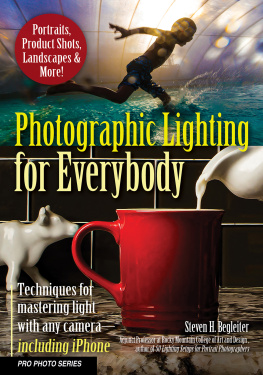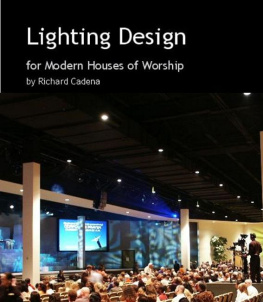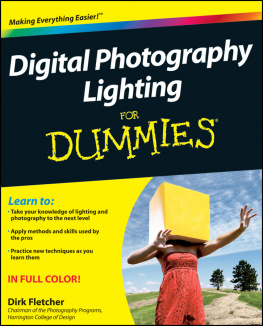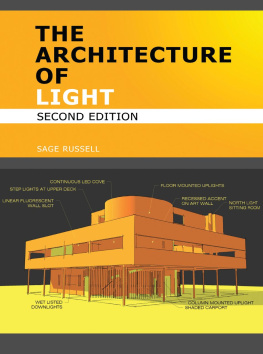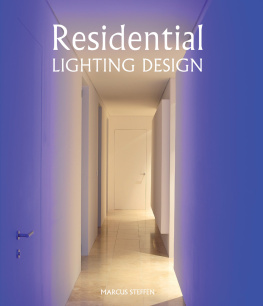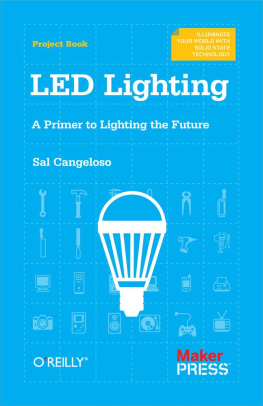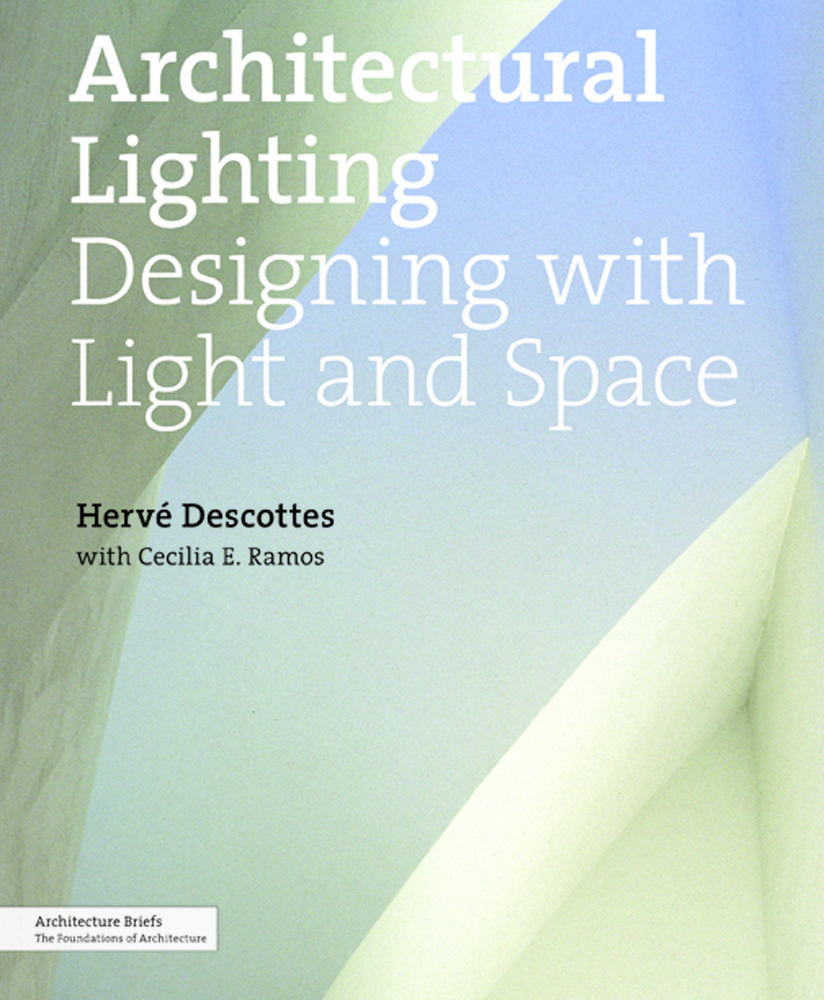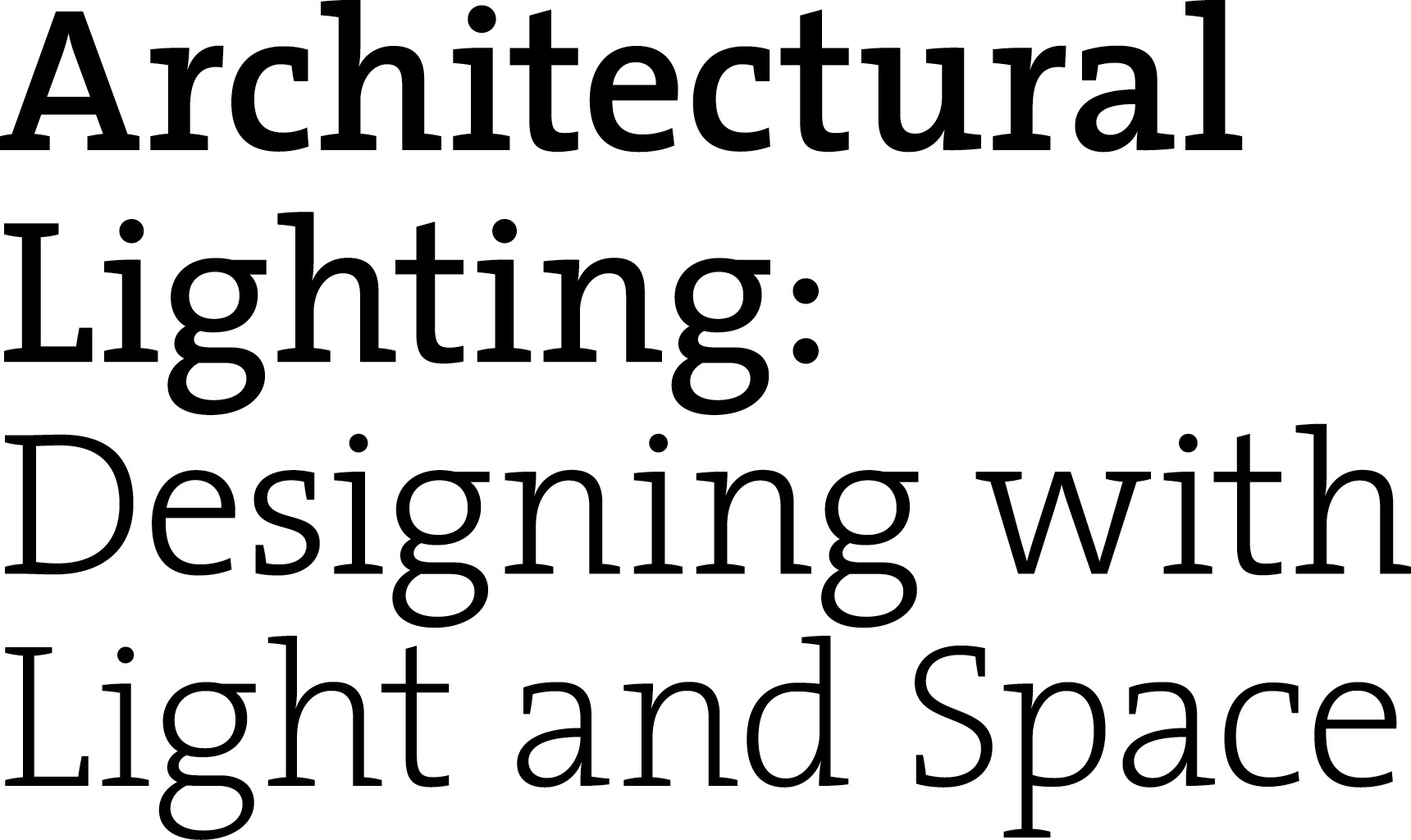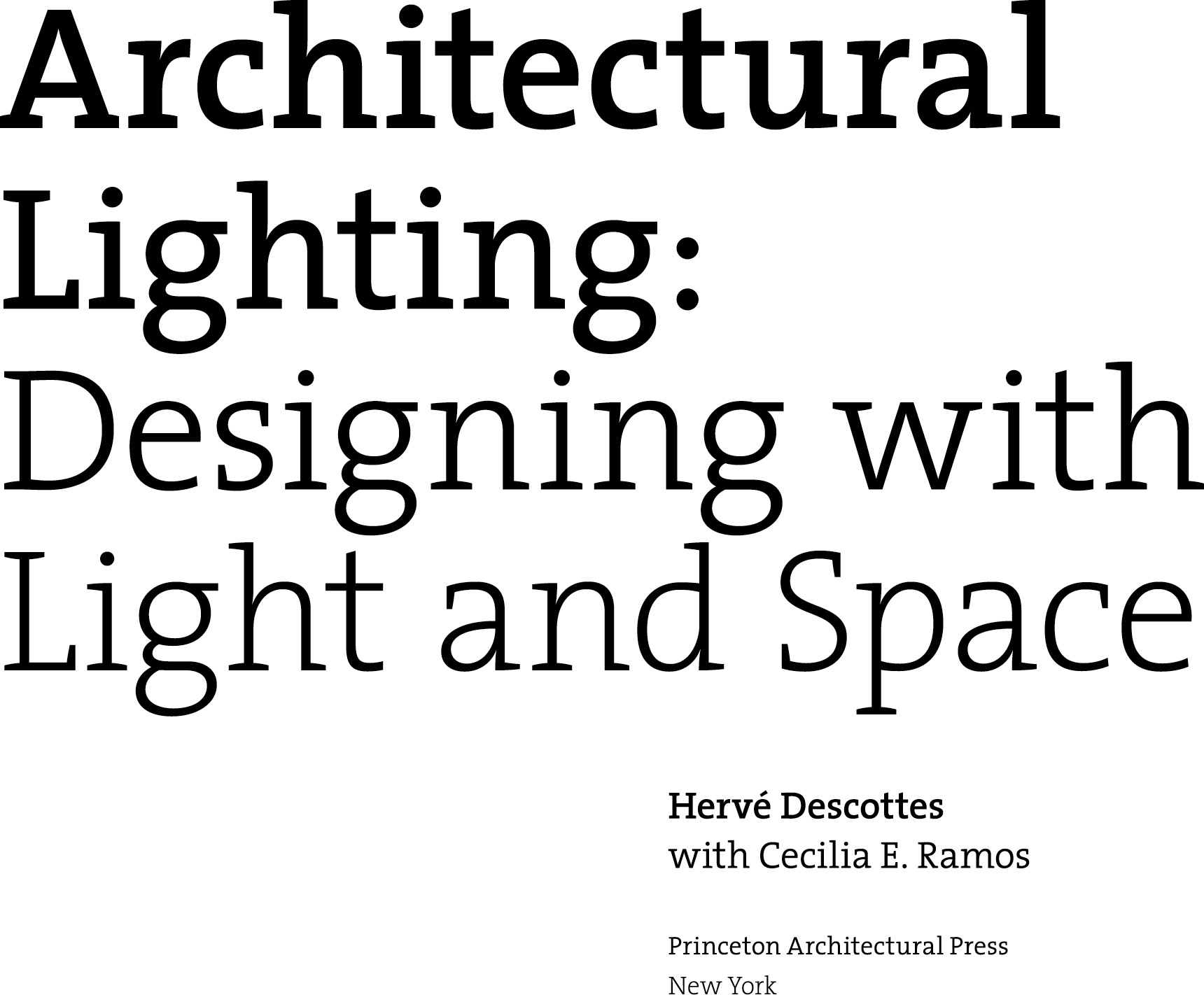The Architecture Briefs series takes on a variety of single topics of interest to architecture students and young professionals. Field-specific information and digital techniques are presented in a user-friendly manner along with basic principles of design and construction. The series familiarizes readers with the concepts and technical terms necessary to successfully translate ideas into built form.
Also in this series:
Architectural Photography: The Digital Way, Gerry Kopelow
Architects Draw , Sue Ferguson Gussow
Digital Fabrications , Lisa Iwamoto
Building Envelopes , Jenny Lovell
Ethics for Architects , Thomas Fisher
Architecture Briefs
The Foundations of Architecture
Published by
Princeton Architectural Press
37 East Seventh Street
New York, New York 10003
Visit our website at www.papress.com.
2011 Princeton Architectural Press
All rights reserved
14 13 12 11 4 3 2 1 First edition
No part of this book may be used or reproduced in any manner without written permission from the publisher, except in the context of reviews.
Every reasonable attempt has been made to identify owners of copyright. Errors or omissions will be corrected in subsequent editions.
Editor: Becca Casbon
Designer: Jan Haux
Special thanks to: Bree Anne Apperley, Sara Bader, Nicola Bednarek Brower, Janet Behning, Carina Cha, Tom Cho, Penny (Yuen Pik) Chu, Russell Fernandez, Pete Fitzpatrick, Jan Haux, Linda Lee, John Myers, Katharine Myers, Dan Simon, Andrew Stepanian, Jennifer Thompson, Paul Wagner, Joseph Weston, and Deb Wood of Princeton Architectural Press Kevin C. Lippert, publisher
Library of Congress Cataloging-in-Publication Data
Descottes, Herv.
Architectural lighting : designing with light and space / Herv Descottes, coauthor Cecilia E. Ramos. -- 1st ed.
p. cm. -- (Architecture briefs)
Includes bibliographical references and index.
ISBN 978-1-56898-938-9 (alk. paper)
ISBN 978-1-61689-209-8 (digital)
1. Light in architecture. 2. Lighting. I. Ramos, Cecilia E. II. Title.
NA2794.D47 2011
729.28--dc22
2010027086
Contents
I am grateful to the many who helped me bring this book to fruition, and without whose support I would be at a loss. First I would like to thank Cecilia E. Ramos for her research and writing contributions to Architectural Lighting , and for her dedication and determination in making this project happen. Second I would like to extend my thanks to Princeton Architectural Press for this wonderful opportunity, specifically to Clare Jacobson, who supported the project from its conceptual beginnings, and to Becca Casbon, who steered it through to publication. I am grateful to my three friends and colleagues who graciously contributed to the contents of this book: to Steven Holl, for his inspiration, poetry, friendship, and for the many wonderful professional moments we have shared; to Sylvain Dubuisson, for his continuous inspiration, insight, and friendship; and to James Corner, for the opportunity to work on so many beautiful projects together. The illustrations for this book were completed by Anna Muzlimova, and I thank her for her beautiful work and for the many years of collaboration with her. Also, the book would not look quite the same without the superb images of the many photographers who generously contributed their work to this project. A big thank you goes to B. Alex Miller and Socorro Sperati for the constructive conversations we have shared, and for their feedback and general review of this book. A special thanks to Miina Matsuoka for our partnership, our closeness, and for her ongoing support. And a final thank you to the LObservatoire International team of the past, present, and future, with whom I have had the pleasure to share so many important moments throughout many wonderful projects.
Herv Descottes
We find beauty not in the thing itself, but in the patterns of shadows, the light and the darkness, that one thing against another creates.
Junichiro Tanizaki
Our visual understanding of this world is defined through both material and light, two seemingly opposite phenomena inextricably linked to one another. Light is revealed to the human eye through interactions with material, while material visually exists only in the presence of light. This interdependence between material and light, form and intangible atmospheres, defines the visual environments we inhabit.
While light is by definition energy, its effects transgress the realm of the scientific, moving into that of the experiential. Light renders our world in an endless array of visual permutations, revealing colors, textures, distances, or the passing of time. These and other qualities of light can affect emotions and trigger memories, giving rise to specificity of place. What we often recall of a space is its feeling or sense of atmosphere, not its formal details. On a practical level, light ensures visibility, and through the definition of visual limits it can establish spatial hierarchies and sequences, or spaces of movement and pause. As architectural lighting designers, our role is to utilize light as a medium through which architectural intentions can be heightened and experiential spaces transformed.
Architectural lighting design is a discipline cultivated from a myriad of fields: architecture, art, and engineering are but a few sources of knowledge from which we draw. This pluralistic model is both the foundation and the point of departure for the emergence of lighting design as its own specialty.
Similarly, the history of architectural lighting does not unfold in a singular trajectory. Instead, independent narratives can be woven together to tell its story, as humans sought to harness light in pursuit of spirituality, in the name of social organization, or for practical or aesthetic purposes in the built environment. The evolution of architectural lighting design is invariably linked to the emergence of new architectural forms, technologies, and the innovative visions of many. We can look to the oculus of the Pantheon, the spinning chandeliers of a Byzantine church, or the emergence of the nineteenth-century gas street lamp as benchmarks in our complex history. Only in the twentieth century, however, did the independent discipline of lighting design coalesce, replete with its own professional constituency.
In the twenty-first century, architectural lighting design continues to practice in concert with many other fields. While lighting designs primary purpose is to respond to the needs of a space, to do so successfully requires the active collaboration of all parties involved, including but not limited to the client, architect, interior designer, landscape architect, urban planner, and engineers. Moreover, an architectural lighting designers work is not limited to the realm of aesthetics, but also responds to functional, technical, spatial, and experiential necessities of a project. Lighting design necessitates a deep, meditative exchange of knowledge, and therefore it must be understood not as an interdisciplinary field but as a transdisciplinary one that traverses the boundaries of conventional thought.
With regard to this history and practical trajectory, it is necessary to underscore two vital issues specific to the methodologies of this book. First, while this book will certainly draw upon overlaps in a variety of professions, we will focus primarily on the application of lighting in the built environment and the ways in which light can create and alter our perception of these spaces. Second, it must be noted that this publication provides a particular approach to the profession that has been garnered through Herv Descottess personal experiences in the field and through his relationships with architects, collaborators, and his firm, LObservatoire International, so the methods of lighting design examined here are not to be considered exhaustive. We have not written an encyclopedic book on the science and technologies of lighting, nor do we aim to tell a history of architectural lighting designthese stories can be found elsewhere. Instead, we wish to provide the reader with new insight on the experiential potential of architectural lighting design in light of Descottess reflections and experiences.


